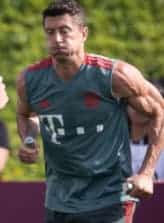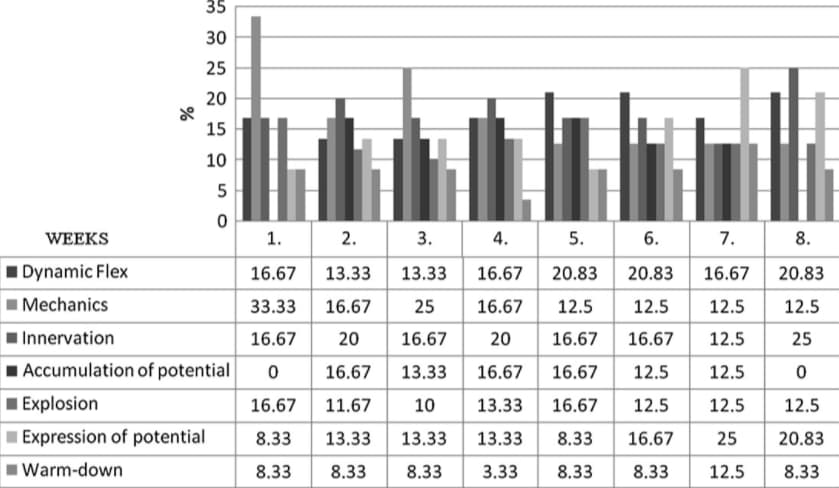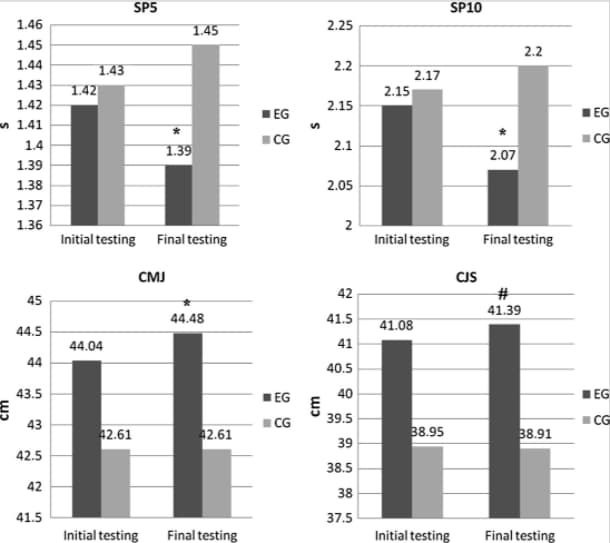17 de January de 2022
Agility Training for Footballers
Football has been and continues to be the king sport within the world of sports practice. From Spain to China, through Brazil and Cameroon, football is the most watched sport and that moves the most masses among all existing sports. Figures such as Pelé, Maradona, Messi or Cristiano Ronaldo are known throughout the world and have marked a before and after in the football world. It is important to mention that the football to which we are accustomed today, has nothing to do with the football that could be seen in the past. A sport currently marked by a brutal physical character has left behind moments in which a ponytail made the public fascinated or where Ronaldinho (master in dribbling) raised the Bernabéu for his magic.

As I was saying, the characteristics of today’s football go through a great physical condition and an analysis of the game marked by technology. GPS, accelerometers and scouting have made football a sport in which statistics and data processing can make a team win or lose. In this sense, the new training methodologies have also had to adapt to achieve what coaches and physical trainers need for their athletes to perform at their best.

In this week’s Vitruve post we will focus on improving agility as a key parameter for performance improvement. However, as we have previously mentioned, the improvement of physical condition is currently the most important pillar within the preparation of the athlete. As we can see in image many players have become real athletes with the aim of improving performance and I think that these players do not need any justification to know that they are the best.
As we have previously mentioned, today’s football has made athletes exposed to countless actions throughout a match where strength, power, speed and agility are very important. However, the most recent evidence has seen that it is difficult to carry out a training in which all the named physical qualities can be covered since the training methodology to be used for the improvement of each of them is different (1). One of the best known training within the world of football and other modalities is the SAQ method “Speed, Agility, Quickness” (2) that focuses on the improvement of these 3 parameters and this will make our athlete increase his performance. In particular, agility is a variable within training that becomes especially important in the world of football as previous authors have already shown (3) for its ability to improve performance and overcome rivals but also to prevent injuries. In addition, agility training manages to improve performance and favors a better memory of the game so its implementation will not only serve us for a certain moment of the competition, but it will be persistent over time.

In this week’s post we are going to focus on training for improving agility and see the effect it has on performance improvement. To do this, we have selected the study by Jovanovic, M. and collaborators (4) in which through a randomized controlled study they measured the effectiveness of a training based on agility and speed against a training group that did not train in this way.
As always, in order for our coaches to be able to rely on the best scientific evidence for their workouts, we bring the intervention program they used:

In the picture we have the % that were given to each type of training. It should be noted that in this study a specific agility training was carried out over a period of 8 weeks in a group of 50 professional footballers from Croatia aged 19 years on average and a normal training was carried out with 50 other professional footballers. The experimental group developed the agility session 3 times a week while the control group had a different training the same 3 days to match the training volume of both groups.
To measure the effectiveness of the method based on agility, an analysis was carried out of the variables that seem to be most influential when measuring the performance of the footballer, such as:
- Sprint speed of different distances such as 5, 10, 20 and 30 meters.
- Vertical jump tests such as“Squat Jump”, “Contra-movement Jump” and “Multi jump with stretched legs”
The results between both groups can be seen in the following image where we highlight that there was an improvement in the sprint in 5 and 10 meters, something that really matters, since the actions that surround the sprint and that determine the performance usually occur in situations between 5 and 15 meters according to Bangsbo, J. et al. (5).

Likewise, as we can see there was an improvement in performance in the “Contra-movement jump” where they went from jumping 44.04 cm to 44.48 cm. The improvements seem to be clear in the group that carried out the agility training. However, we must realize that the difference between the two groups is quite high. For example, in the CMJ jump we see that in “Initial testing” the CG (Control Group) has much lower values than the experimental group. This may be defined because the athletes were already better before the intervention or because they were more motivated.
As a conclusion to this small study, we can say that training focused on agility seems to improve parameters as important as the sprint or the jump that are key when it comes to avoiding an opponent or finishing headfirst.
On the other hand, we will focus on the study by Chaalali, A. et al. from 2016 in which they compared two types of training based on change of direction and agility for performance improvement (6). In this case, the study was conducted in young athletes aged 15-16 years who were divided into 3 groups of 10 and 11 participants per group for a total of 6 weeks differentiating training with change of direction, agility-based training and a control training group.
In order to check if the effects of training improved performance, different tests were carried out both before and after the intervention and were:
- Sprint 15 meters
- Agility circuit with and without the ball
- Various agility tests
The results of the study show that there were improvements in the groups that performed training based on change of direction and agility when compared to the group that trained on a regular basis.
As we have been able to verify, these two studies seem to tell us that specific agility training and training based on game situations with change of direction favor the improvement of performance either because their levels of speed and acceleration are increased or because they improve in the time of action. This is the key to true success in football, that in a matter of seconds you are faster than the opponent, you can get ahead of their decision and you manage to score a goal at the right time. A slightly higher jump, a slightly faster sprint or an inch in anticipation of your opponent make all the difference in a matter of seconds.
Finally, from the Vitruve blog we encourage coaches and athletes to try this training methodology where skill and agility prevail over physical power. Within the periodization of football training we have many weeks to work on physical factors such as strength and power, but let’s not forget that the magic of football lies in giving a good show and doing wonders that require great agility. Do not hesitate to use this type of training with yours.
References
- Little T, Williams A. Specificity of acceleration, maximum speed and agility in professional soccer players: Routledge London, UK:; 2003.
- Pearson A. Speed, agility and quickness for soccer: SAQ soccer: A. & C. Black; 2001.
- Miller MG, Herniman JJ, Ricard MD, Cheatham CC, Michael TJ. The effects of a 6-week plyometric training program on agility. Journal of sports science & medicine. 2006;5(3):459.
- Jovanovic M, Sporis G, Omrcen D, Fiorentini F. Effects of speed, agility, quickness training method on power performance in elite soccer players. The Journal of Strength & Conditioning Research. 2011;25(5):1285-92.
- Bangsbo J. Fitness training in football: a scientific approach: August Krogh Inst. University of Copenhagen. 1994.
- Chaalali A, Rouissi M, Chtara M, Owen A, Bragazzi N, Moalla W, et al. Agility training in young elite soccer players: promising results compared to change of direction drills. Biology of sport. 2016;33(4):345.

